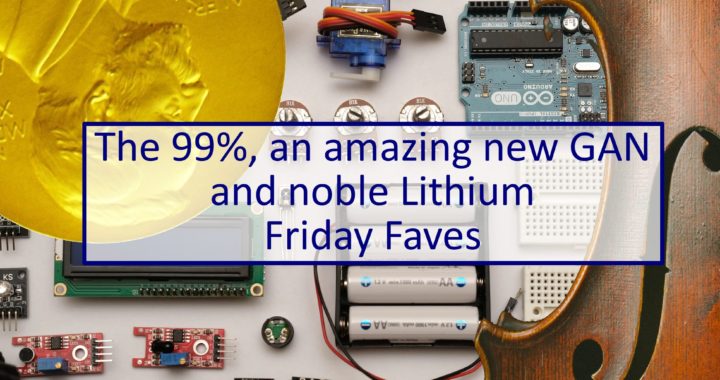This week in the Friday Faves we have a cheeky Tweet, a new GAN that might find some amazing applications in geophysics and the Nobel Prize for chemistry.
99%
Let’s start out with some wisdom of the creator of Keras:
VSCode Universe now with Jupyter
My editor of choice is VSCode with the Python extension. Finally, they added native Jupyter support. Read the announcement and then some.

WaveForms in a GAN
In a story that only the internet can write, Marco Pasini experimented with an unpaired GAN architecture. This has been done by pix2pix before, which brought me many hackathon projects and even the first application of GANs in geophysics ever. But those are image-based. MelGAN is waveform-based on different length tracks!
I love the idea of combining siamese networks to stabilize the unpaired training, but read for yourself, because the reddit community /r/machinelearning encouraged Pasini to write up a paper!
Considering the trajectory of pix2pix, which led us to almost believable DeepFakes today, it will be exciting to see what this brings in the future. Moreover, waveform transfer may solve some technological problems of matching vintage oil-based streamer seismic data sets to modern 4D acquisitions.
Pytorch 1.3 is out!
On another note. Just a week after Tensorflow 2.0 finally dropped their big revamp, PyTorch bring mobile support, quantization and other nice tools for researchers.
Nobel Prize goes to Lithium Batteries
You’re probably reading this on a device run by Lithium-Ion batteries. Why does this warrant a Nobel Prize? If you get it wrong you get the Samsung Galaxy Note 7. If you get it right, you get computers more powerful than the machines that sent humanity to the moon, in our pockets running for a day and charging in below an hour.
In a world that is slowly edging toward de-carbonization, energy storage is the biggest problem to tackle. Learn something about Lithium batteries and take a look inside:
Nobel Press Release: “They created a rechargeable world“
Jesper Dramsch
Latest posts by Jesper Dramsch (see all)
- Juneteenth 2020 - 2020-06-19
- All About Dashboards – Friday Faves - 2020-05-22
- Keeping Busy – Friday Faves - 2020-04-24

